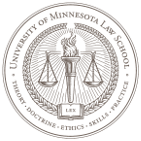Will Orlady, MJLST Lead Articles Editor
In 1984, Congress enacted the Drug Price Competition and Patent Term Restoration Act (Hatch-Waxman). Since then, pioneer pharmaceutical manufacturers and their generic counterparts have resolved patent disputes in federal district court under the Hatch-Waxman patent dispute framework. This framework is admittedly complex. But it forces interested parties to engage with Hatch-Waxman, mandating compliance with congressionally determined policy decisions regarding pharmaceutical exclusivity. Hatch-Waxman’s patent dispute framework was part of the larger bill, crafted to balance the interests of pioneer and generic drug manufacturers. Congress enacted the law to address two (apparently competing) goals: (1) to encourage innovation in pharmaceutical research and development and (2) to help generic drugs reach the market more quickly. The tension between these goals merits further discussion.
Before Hatch-Waxman, concerns grew that drug prices were too high and that access to certain treatments was too limited. Thus, there was both need and substantial demand for cheaper, generic drugs. On the other hand, pioneer drug manufacturers complained of inadequate market exclusivity following FDA’s New Drug Application (NDA) process. Put simply, pioneer companies spent (and continue to spend to this day) approximately $1 Billion brining a new drug to market. On top of the money, pioneer manufactures potentially spend several years of their drugs’ valuable patent terms going through the NDA process. Thus, pioneer companies noted that recouping R&D and regulatory expenses was not feasible given the “short” market exclusivity period.
Hatch-Waxman was a carefully wrought legislative compromise. It granted pioneers a patent term extension based on the length of FDA’s regulatory review, non-patent market exclusivity provisions, a mechanism for increasing the public notice of patents and patent challenges, and an automatic injunction forbidding FDA approval of a generic drug in certain circumstances. The generic manufacturers got, among other things, the Abbreviated New Drug Application (ANDA), making the regulatory process for generic drugs less onerous. To be sure, Hatch-Waxman is not without its critics, and its nuances are immense. But it is important to remember that the act represents a careful Congressional balancing of industry and public interests. Hatch-Waxman’s patent dispute resolution mechanism squarely fits within this compromise.
Enter the America Invents Act (AIA) of 2011. Of note, the AIA revised certain post-grant opposition procedures. Specifically, the law expanded the importance of inter partes review (IPR). IPR is a process by which a third party may have a patent reexamined by the patent office to verify that the office validly issued the patent. Since the AIA’s enactment, IPR has become immensely popular. Why is this? IPR offers a potential alternative to district court litigation. It provides advantageous invalidation standards—e.g. the “broadest reasonable interpretation” during claim construction. Further, IPR allows patent challenges with relatively limited discovery, cutting both the time and cost of district court patent litigation. Finally, IPR petitioners have been enormously successful in invalidating many of the patents challenged to date.
Needless to say, IPR frightens patentees holding rights to valuable patents. Can you see where I’m going here? Are particular Congressional mandates and policy determinations on a collision course?
The post-AIA surge of IPR proceedings has pioneer pharmaceutical manufacturers worried—rightly so. Generic manufacturers are already petitioning the U.S. Patent and Trademark Office (PTO) for IPR of patents protecting various pharmaceutical and biologic products. Given the aforementioned advantages of IPR, this shouldn’t come as a surprise, but that is not to say that it is not remarkable. Generic manufacturers could be leveraging the advantages of IPR to force pioneer drug manufacturers to settle patent disputes out of district court. Or, of more consequence, they could be using IPR to skirt the patent dispute frameworks required by Hatch-Waxman and the BPCIA (for biologics).
Indeed, if pioneer pharmaceutical manufacturers hold patents allowing for market exclusivity, the patents should be validly issued. It is, however, simultaneously important to remember that Congress has treated drug and biologic patents differently since, at the very least, 1984. Pharmaceutical patents are remarkable in at least three key ways. First, patents on commercially successful drugs are extraordinarily valuable. Congress (at least ostensibly) allows this because of the enormous regulatory barriers to entry. In other words, it’s a trade. FDA imposes supra-burdensome regulatory costs to ensure new drugs are safe and effective. Consequently, Congress allows pioneer drug manufacturers to unilaterally exploit the market to recoup losses, and make money. Second, pharmaceutical patents read on particles of matter that are harnessed to treat disease and save lives. This creates a unique demand. And third, pharmaceutical patents read on products which require sensational development costs, including the time and money required for regulatory approval.
Does this mean pharmaceutical patents should be treated differently, or made exempt from IPR? The answer is not so simple. But legislators, scholars, and practitioners should consider whether IPR is having unintended consequences within the pharmaceutical industry. Just as a quick example: Did Congress truly intend for the AIA’s IPR to be a way around Hatch-Waxman or the BPCIA? And even if it did, does it make sense to put enormously valuable patents at the mercy of an overburdened administrative agency? As I said, the answers don’t come readily. It’s a policy debate that needs to happen. Until it does, I think it unwise to abandon previously established Congressional compromises—i.e. Hatch-Waxman—for a hasty change to our patent system.

